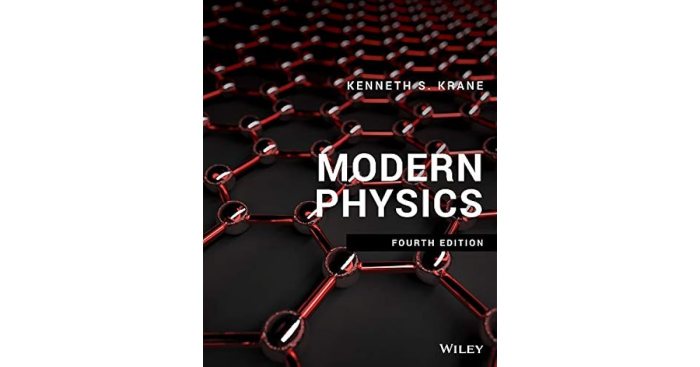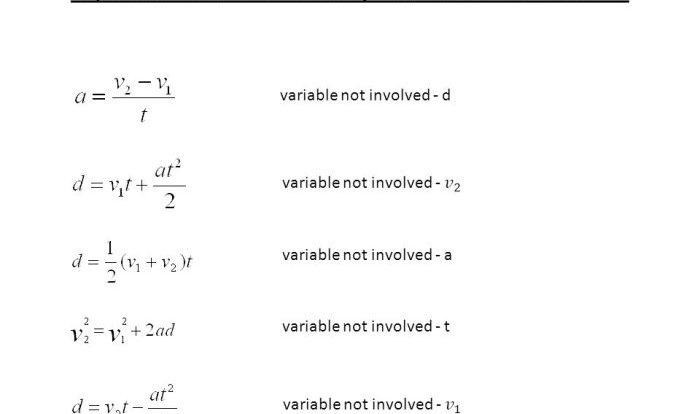Modern physics 2nd edition randy harris pdf – Delving into “Modern Physics 2nd Edition” by Randy Harris, readers embark on an illuminating journey through the captivating realm of modern physics. This comprehensive text presents a lucid and authoritative exploration of the fundamental principles and groundbreaking applications that have revolutionized our understanding of the universe.
Harris masterfully guides readers through the intricacies of quantum mechanics, the theory of relativity, and other key concepts that have reshaped our perception of reality. With its engaging narrative and accessible explanations, this book is an invaluable resource for students, researchers, and anyone seeking to deepen their knowledge of modern physics.
1. Introduction to Modern Physics 2nd Edition by Randy Harris

This textbook provides a comprehensive introduction to the fundamental concepts and applications of modern physics. It is intended for undergraduate students with a background in classical physics and calculus. The book is organized into seven chapters, each covering a different aspect of modern physics.
Target Audience and Level of Knowledge Required
The target audience for this book is undergraduate students in physics, engineering, and other science-related fields. The book assumes a basic understanding of classical physics and calculus. However, no prior knowledge of modern physics is required.
Overview of the Book’s Organization and Structure
The book is divided into seven chapters, each covering a different aspect of modern physics. The chapters are as follows:
- Introduction to Modern Physics
- Key Concepts in Modern Physics
- Applications of Modern Physics
- Experimental Techniques in Modern Physics
- Mathematical Tools for Modern Physics
- Historical Development of Modern Physics
- Current Research in Modern Physics
2. Key Concepts in Modern Physics

This chapter introduces the basic principles of modern physics, including wave-particle duality, the uncertainty principle, and the theory of relativity. These concepts have revolutionized our understanding of the universe and have led to the development of new technologies.
Wave-Particle Duality
Wave-particle duality is the concept that all matter has both wave-like and particle-like properties. This concept was first proposed by Louis de Broglie in 1924 and has since been confirmed by numerous experiments.
The Uncertainty Principle
The uncertainty principle is a fundamental principle of quantum mechanics that states that it is impossible to know both the position and momentum of a particle with perfect accuracy. This principle has important implications for our understanding of the universe and has led to the development of new theories of physics.
The Theory of Relativity
The theory of relativity is a theory of gravity that was developed by Albert Einstein in the early 20th century. The theory of relativity has revolutionized our understanding of space, time, and gravity and has led to the development of new technologies, such as GPS.
3. Applications of Modern Physics

This chapter describes the practical applications of modern physics in fields such as medicine, engineering, and technology. These applications have improved our lives in many ways and have led to the development of new technologies that are used in a wide variety of fields.
Medicine, Modern physics 2nd edition randy harris pdf
Modern physics has had a major impact on the field of medicine. For example, X-rays are used to diagnose and treat medical conditions, and lasers are used in surgery and other medical procedures.
Engineering
Modern physics has also had a major impact on the field of engineering. For example, transistors are used in computers and other electronic devices, and lasers are used in telecommunications and other optical applications.
Technology
Modern physics has also had a major impact on the field of technology. For example, nuclear power plants use nuclear reactions to generate electricity, and particle accelerators are used in research and development.
4. Experimental Techniques in Modern Physics
This chapter explains the experimental techniques used in modern physics, such as particle accelerators and lasers. These techniques have allowed physicists to make groundbreaking discoveries about the universe and have led to the development of new technologies.
Particle Accelerators
Particle accelerators are used to accelerate charged particles to very high speeds. This allows physicists to study the interactions between particles and to create new particles.
Lasers
Lasers are devices that emit a concentrated beam of light. Lasers are used in a wide variety of applications, including telecommunications, optical storage, and laser surgery.
5. Mathematical Tools for Modern Physics

This chapter explains the mathematical tools used in modern physics, such as calculus, linear algebra, and differential equations. These tools are essential for understanding and applying the principles of modern physics.
Calculus
Calculus is a branch of mathematics that deals with the rate of change. Calculus is used in modern physics to describe the motion of objects and to solve problems involving waves and fields.
Linear Algebra
Linear algebra is a branch of mathematics that deals with vectors and matrices. Linear algebra is used in modern physics to describe the properties of atoms and molecules and to solve problems involving quantum mechanics.
Differential Equations
Differential equations are equations that involve derivatives. Differential equations are used in modern physics to describe the motion of objects and to solve problems involving waves and fields.
6. Historical Development of Modern Physics: Modern Physics 2nd Edition Randy Harris Pdf
This chapter traces the historical development of modern physics from its origins in classical physics to its current state. This chapter discusses the key figures and experiments that have shaped the field and explains how modern physics has influenced our understanding of the universe and our place in it.
The Origins of Modern Physics
The origins of modern physics can be traced back to the late 19th century, when physicists began to challenge the classical laws of physics. These challenges led to the development of new theories, such as quantum mechanics and the theory of relativity.
The Key Figures of Modern Physics
Some of the key figures in the development of modern physics include Albert Einstein, Niels Bohr, Werner Heisenberg, and Erwin Schrödinger. These physicists made groundbreaking discoveries that have revolutionized our understanding of the universe.
The Experiments that Shaped Modern Physics
Some of the key experiments that shaped the development of modern physics include the Michelson-Morley experiment, the photoelectric effect experiment, and the Stern-Gerlach experiment. These experiments provided evidence for the new theories of physics that were being developed.
7. Current Research in Modern Physics
This chapter describes the current state of research in modern physics. This chapter discusses the major areas of investigation and the challenges facing physicists. This chapter also provides examples of recent breakthroughs and their potential implications.
The Major Areas of Investigation in Modern Physics
Some of the major areas of investigation in modern physics include particle physics, nuclear physics, and astrophysics. These areas of research are focused on understanding the fundamental nature of matter and the universe.
The Challenges Facing Physicists
Some of the challenges facing physicists include the development of a unified theory of physics, the understanding of dark matter and dark energy, and the development of new technologies.
Recent Breakthroughs in Modern Physics
Some of the recent breakthroughs in modern physics include the discovery of the Higgs boson, the development of new methods for detecting gravitational waves, and the development of new quantum computing technologies.
Popular Questions
What is the target audience for this book?
This book is suitable for undergraduate students in physics, as well as researchers and anyone with a strong interest in modern physics.
What are the key features of this book?
The book provides a comprehensive overview of modern physics, covering fundamental principles, practical applications, experimental techniques, and historical development.
What are the benefits of studying modern physics?
Studying modern physics deepens our understanding of the universe, its laws, and the applications that have shaped our daily lives.

